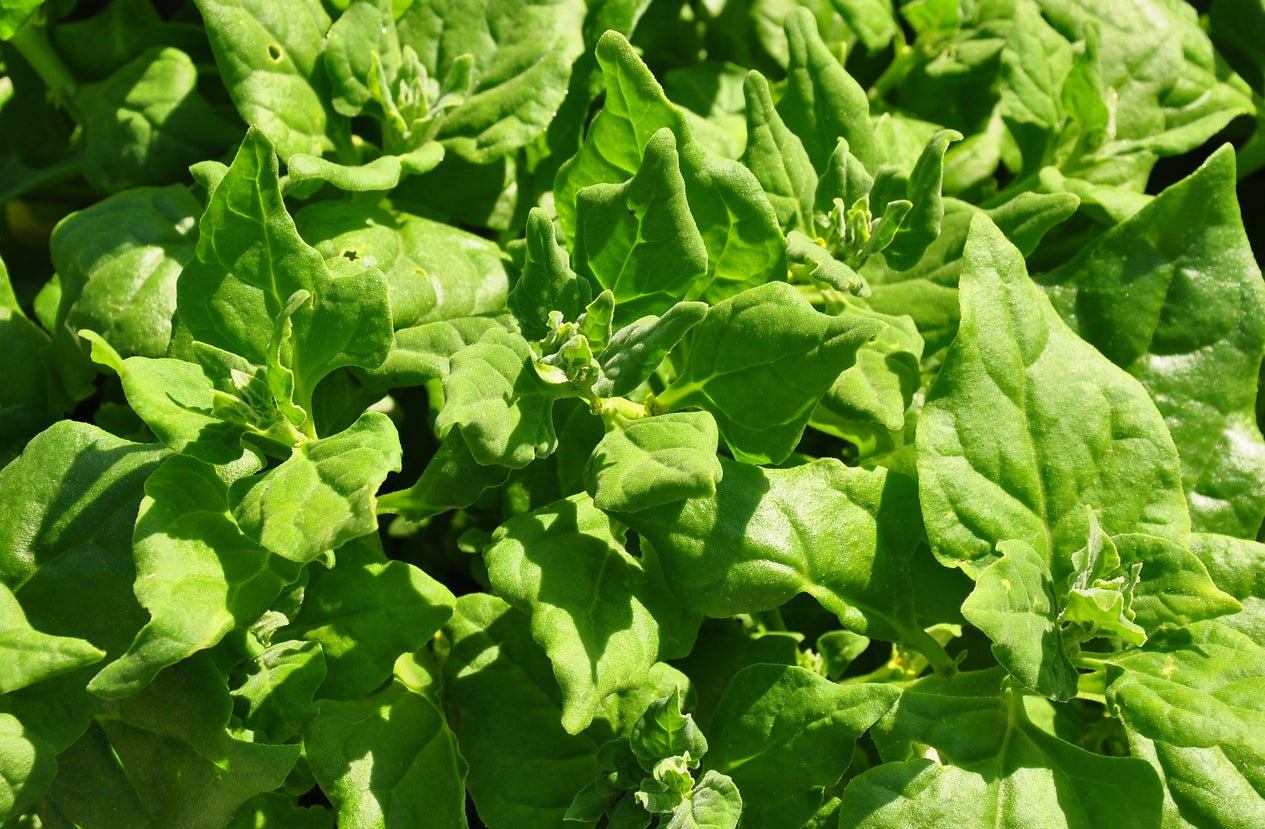New Zealand Spinach Plants: Learn How To Grow New Zealand Spinach


The spinach we are familiar with is in the Amaranthaceae family. New Zealand spinach (Tetragonia tetragonioides), on the other hand, is in the Aizoaceae family. While New Zealand spinach may be used in the same way, it has very different growing conditions from its look-a-like, cool-season cousin. Keep reading for tips on how to grow New Zealand spinach, a plant you can enjoy all summer long.
What is New Zealand Spinach?
Spinach has a host of uses, whether fresh or cooked. Its high concentration of Vitamins A and C and low calories make it a perfect stand alone or complement to recipes. In many regions, growing New Zealand spinach is a warm-season alternative. What is New Zealand spinach? This plant is also packed with nutrients and a perfect stand-in for regular spinach.
Like regular spinach, New Zealand is a leafy green, however, its leaves are much thicker and succulent, lending it the alternate name of ice plant. Other names are Tetragonia, everbearing spinach, and perpetual spinach.
Regular spinach will bolt and slow leaf production once warm temperatures arrive, but New Zealand spinach plants will keep producing throughout the hot summer months. The variety is frost tender and dies back when cold weather appears.
Plants grow 1 to 2 feet (31-61 cm.) tall with a similar spread. There are several cultivars, some with smooth leaves and others with a savoy type leaf.
How to Grow New Zealand Spinach
A bright sunny location is best for growing New Zealand spinach. The plants do benefit from light shading during the hottest part of the day in southern regions.
Start seeds outdoors after all danger of frost has passed in prepared, well-draining soil. Slightly sandy soil provides an excellent medium, with organic matter incorporated and a pH level of 6.0 to 7.0. This spinach is also tolerant of saline soils.
Gardening tips, videos, info and more delivered right to your inbox!
Sign up for the Gardening Know How newsletter today and receive a free copy of our e-book "How to Grow Delicious Tomatoes".
You can even grow New Zealand spinach plants in containers. Keep soil moderately moist, but established plants can tolerate brief periods of drought.
New Zealand Spinach Care
New Zealand spinach has few pest or disease problems. Leaf miners can do cosmetic damage to the leaves. Other potential pests are cabbage worms, cabbage loopers, and aphids.
Drowning from poorly aerated soils and powdery mildew may occur. Make sure the soil is well draining, water from under the leaves and use row covers to protect leaves from pests. Mulch around the plants to prevent weeds, conserve moisture, and keep soil cool.
Harvest when leaves are young, as older foliage may have a bitter flavor. You can remove just a few leaves or cut the plant back to the soil and let it come again. This is a really interesting, easy-to-grow green that can provide all the benefits of spinach well into the warm season.

Bonnie Grant is a professional landscaper with a Certification in Urban Gardening. She has been gardening and writing for 15 years. A former professional chef, she has a passion for edible landscaping.
-
 Looking For Plants To Give You The Soft And Fuzzies? Try These 5 Fuzzy Leaf Plant Options
Looking For Plants To Give You The Soft And Fuzzies? Try These 5 Fuzzy Leaf Plant OptionsLovers of texture, drama, silver foliage and tactile plants will adore these special sensory garden additions. These fuzzy leaf plant options will leave you all aglow
By Susan Albert
-
 Get Ready For A Summer Of Hummers! Grow These Full Sun Hummingbird Plants and Flowers
Get Ready For A Summer Of Hummers! Grow These Full Sun Hummingbird Plants and FlowersIf you’re lucky enough to enjoy a sunny backyard, make sure you are maxing out on your pollinator opportunities and grow these full sun hummingbird plants and flowers
By Tonya Barnett